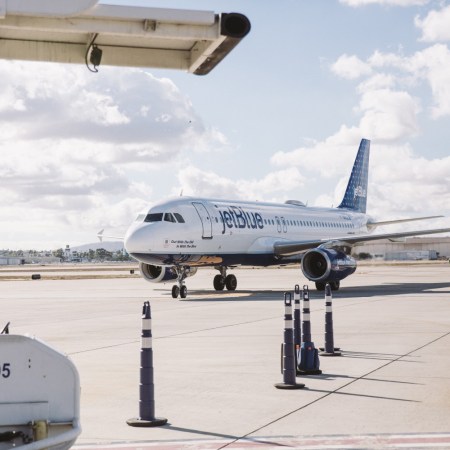The warmer months of the year generally mean an abundance of air travel. But this time of year can also mean stormy weather: heavy rain, lightning and high winds. When you’re trying to fly a plane — particularly taking off or landing — these are not exactly ideal conditions for it. And that can mean delays or cancellations.
A new report from Brian Sumers at Skift explores how airlines in the United States use data to determine which flights to prioritize when the weather turns bad.
As Sumers describes it, this isn’t always an easy decision: canceling one flight can lead to issues with others elsewhere in the country, causing delays to increase exponentially. He writes:
It’s about cost versus benefits. At the core, airlines want to inconvenience as few passengers as possible, but it’s never so simple. Operations planners must deal with many more variables, including what customers are flying, how much flight attendants and pilots can work, where an airplane is needed next, and whether the pilots and the airplane can safely fly in the worst weather.
Another factor? Who is on board a flight. “Employees in the operations center know how many elite frequent flyers are on each flight, and how many have the highest status,” Sumers writes.
One particularly interesting aspect of the article is that each airline has a distinct approach to delaying and canceling flights. Representatives from Southwest and American Airlines are both interviewed for the story, but the two airlines have different ways of dealing with which flights to prioritize when the weather turns inhospitable.
The article is a fascinating look inside the inner workings of the airline industry — and offers to much to consider the next time you’re waiting at the gate for a new flight time to be announced.
Editor’s Note: RealClearLife, a news and lifestyle publisher, is now a part of InsideHook. Together, we’ll be covering current events, pop culture, sports, travel, health and the world. Subscribe here for our free daily newsletter.
Thanks for reading InsideHook. Sign up for our daily newsletter and be in the know.


















